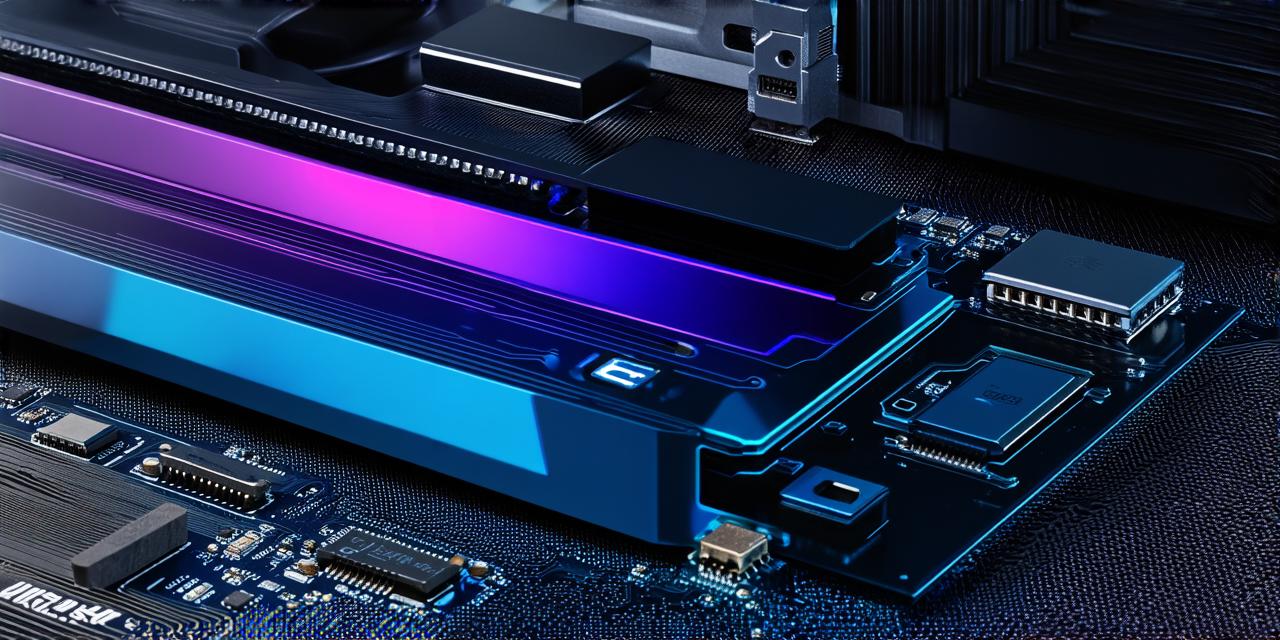Are you ready to create your next masterpiece using Unreal Engine 4 (UE4)? Before diving into the creative process, it’s important to ensure that your system meets the minimum requirements for UE4. In this article, we will explore the system requirements for UE4 and provide some tips on how to optimize your setup for a smooth gaming experience.
Minimum System Requirements for UE4:
- Processor: Intel Core i5-2500K or AMD FX-8350
- Graphics card: NVIDIA GeForce GTX 660Ti or AMD Radeon HD 7970M
- RAM: 4GB DDR3 or better
- Storage: HDD with at least 20GB free space (SSD recommended)
- Operating system: Windows 7 SP1, Windows 8.1, or Windows 10
While these requirements are the bare minimum, they are not necessarily sufficient for high-end gaming and professional use. We recommend upgrading to a more powerful system if you plan on using UE4 for demanding tasks such as 3D modeling, animation, or simulation.
Recommended System Requirements for UE4
For optimal performance, we recommend the following system requirements:
- Processor: Intel Core i7-2600K or AMD FX-8350
- Graphics card: NVIDIA GeForce GTX 970 or AMD Radeon R9 290M
- RAM: 16GB DDR3 or better
- Storage: SSD with at least 100GB free space (SSD recommended)
- Operating system: Windows 7 SP1, Windows 8.1, or Windows 10
These requirements are designed for a smooth gaming experience on high graphics settings and for professional use of UE4. If you plan on using UE4 for virtual production or real-time rendering, we recommend upgrading to an even more powerful system.
Upgrading Your System
If your system does not meet the minimum requirements for UE4, there are a few options for upgrading:
- Upgrade your processor and graphics card: These are the most critical components of any gaming or professional setup. You can upgrade to a more powerful processor and graphics card to improve performance and compatibility with UE4.
- Upgrade your RAM: Adding more RAM will help your system handle larger projects and more demanding tasks.
- Upgrade your storage: If you have an HDD, consider upgrading to an SSD for faster load times and improved overall performance.
- Close unnecessary programs: Having too many programs running in the background can slow down your system and impact performance. Close any programs that are not necessary for your workflow.
- Disable startup programs: Some programs automatically start when you turn on your computer, which can slow down the boot time and impact overall performance. Disable any unnecessary startup programs to improve speed and efficiency.
- Clean up temporary files: Over time, your system will accumulate temporary files that can slow down performance. Use a disk cleanup tool or manually delete these files to free up space and improve speed.
- Adjust graphics settings: UE4 offers a range of graphics settings that you can adjust to optimize performance for your specific setup. Adjusting the resolution, quality, and other settings can help improve frame rates and reduce lag.
Case Study: Creating a 3D Model with UE4
Let’s take a look at an example of how upgrading your system and optimizing your setup can impact performance when creating a 3D model with UE4.
Suppose you have a relatively low-end computer with a Core i5 processor, NVIDIA GeForce GTX 660 graphics card, 8GB DDR3 RAM, and an HDD for storage. You decide to upgrade your system by adding a more powerful graphics card (NVIDIA GeForce GTX 970) and increasing your RAM to 16GB DDR4.
Before upgrading, you experience laggy performance when creating 3D models in UE4. You have to constantly adjust the graphics settings to maintain acceptable frame rates, and it takes a long time for your models to render.
After upgrading your system, you notice a significant improvement in performance. Your models render much faster, and you can adjust the graphics settings to achieve higher-quality visuals without experiencing lag. You’re able to create more complex 3D models with ease, and your workflow becomes much more efficient.
Comparing UE4 to Other Game Engines
When it comes to system requirements, UE4 is relatively demanding compared to other game engines such as Unity or CryEngine. However, the benefits of using UE4 for 3D modeling, animation, and simulation make it a popular choice for professionals in these fields.
UE4 offers a range of advanced features that are not available in other game engines, including dynamic lighting, motion capture, and real-time rendering. These features require more powerful hardware to run smoothly, but the results are well worth the investment for those looking to create high-quality 3D content.
FAQs
1. What is the recommended processor speed for UE4?
The recommended processor speed for UE4 is an Intel Core i7 or an AMD FX series processor. However, this can vary depending on
When upgrading your system, it’s important to choose compatible components that are optimized for UE4. We recommend checking out the official UE4 hardware requirements before making any changes to your setup.
Optimizing Your System for UE4
In addition to upgrading your system, there are a few tips you can follow to optimize your setup for UE4:
